Over recent years people have become more aware of Electromagnetic Field (EMF) radiation and what it can do.

EMF radiation can come from a number of things including WiFi, cell phones and power lines. You may be wondering what can help block these waves of radiation and keep you safe.
Specifically, can trees block EMF radiation?

The fact is that trees cannot block EMF radiation completely. They do however reduce the amount of radiation when it passes through them. Hence, having trees in line between your house and a mobile tower will help reduce the amount of exposure to EMF.
Numerous studies have shown that EMF radiation has a low but real risk of causing hormone alteration, cancer and cell disruption. More and more studies are being conducted to find out if EMFs really pose a threat to your health.
What is EMF Radiation?
EMFs have been around forever. An EMF is an electrical and magnetic field running next to each other in an unseen waveform. They exist in the world around you and even in your body.
Natural EMFs come from the sun in the form of UV rays. Too much exposure to UV rays results in getting burnt.
Natural EMFs ,are not very intense, unlike the ones made by technology, which are much higher in intensity. Consider this when you think about the effects on your body from man-made EMFs.
Man-made EMFs are divided into two groups: low frequency and high frequency.
- Low frequencies are emitted from devices like smart meters, WiFi Bluetooth, MRIs, computers, microwaves and internal wiring in buildings [a]. They are non-ionizing.
- High frequency EMFs are ionizing radiation and its frequencies are higher than visible light. This frequency comes from devices like Gamma rays, X-rays and ultraviolet light.
The effects of EMF radiation are common knowledge. The effect it has on your body depends on the level of frequency of the radiation.
Low frequencies can affect your central nervous system in your body. High frequencies can cause heating effects, which can lead to a rise in body temperature.
The question “are low frequency EMFs bad for you?” is a still considered a debatable question because:
- Cell phone and electronic business don’t want customers to know that their phones and other electrical devices are physically harmful for them.
- Symptoms from using WiFi, microwaves and cell phones are not very noticeable at first, becoming more noticeable over time instead of immediately.
The EMFs in your body control many processes in the body. Scientists say that every cell in your body has its own EMF.
It is thought that this can cause health issues due to the intense EMFs around you mixing up the usual order of your body’s EMFs. This could lead to any system in your body not working properly, from your immune system to your DNA.
All electrical devices around you using electric energy generate man-made EMF’s, which cause radiation. Meaning you can be exposed to EMF radiation anywhere.
This could be throughout your house. In your bathroom, bedroom, kitchen, study and living room. Wherever you have electric devices.
Once outside your house you are exposed to EMF radiation from TV’s, radios, security detection devices and cell towers [b].
[b] https://emfadvice.com/house-near-cellphone-tower/People living near power lines are even more exposed to EMF radiation.
The area of the wavelengths depends on the frequency of the magnetic field. But depending on that, the area affected within 3 wavelengths is named the near field and the area further on from 3 wavelengths is named the far field.
One wavelength of 50hz or 60hz is thousands of kilometers long and blocking yourself by ‘deflecting’ it does not work. Inside the near field area it is impossible to shield yourself from EMF radiation entirely.
How Can Trees Reduce Radiation?
People often complain about trees blocking their Internet signal. Like many materials, trees reduce the amount of radiation you are exposed to when radiation passes through them. This can be for a couple reasons including
- The amount of water in the trees
- The towers might not have a very strong output signal
- The signal may be a higher frequency signal
Trees reduce the amount of radiation you are exposed to in a similar way to the way tinted windows block out sunlight or that noise doesn’t travel through walls very well.
In 1997, The National Institute for Standards and Technology (NIST) conducted a test [c] to find out how trees would affect the future wireless controls systems. They tested different thicknesses of wood, even thickness of up to 15 cm!
[c] https://www.nist.gov/publications/electromagnetic-signal-attenuation-construction-materialsThey found that wood does reduce radiation, especially the thicker and fresher it is, due to its high water content.
Can Anything Block Radiation?
Things like aluminum and copper [d] reduce EMF radiation by dispersing and absorbing the EMFs as they pass through it.
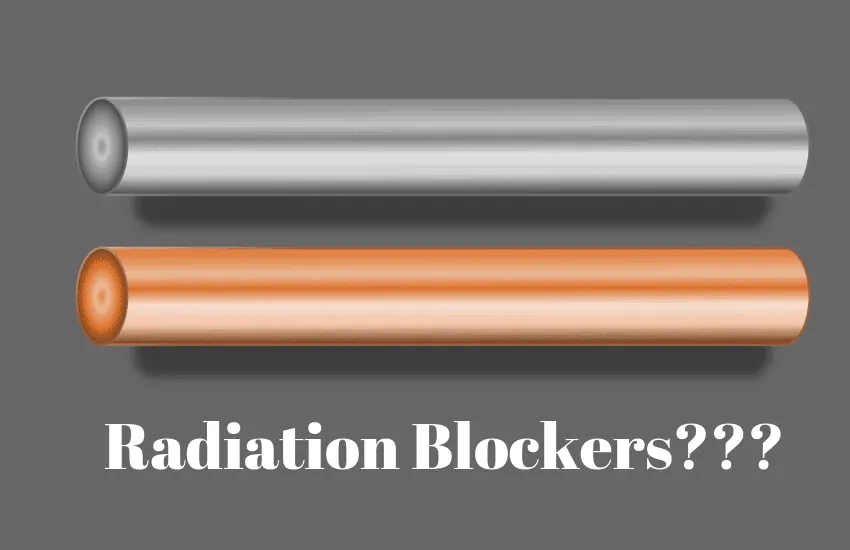
Read my articles on aluminum foil [e] and copper/mylar [f] as EMF blockers in which I bring out how these materials can be used to block radiation cheaply.
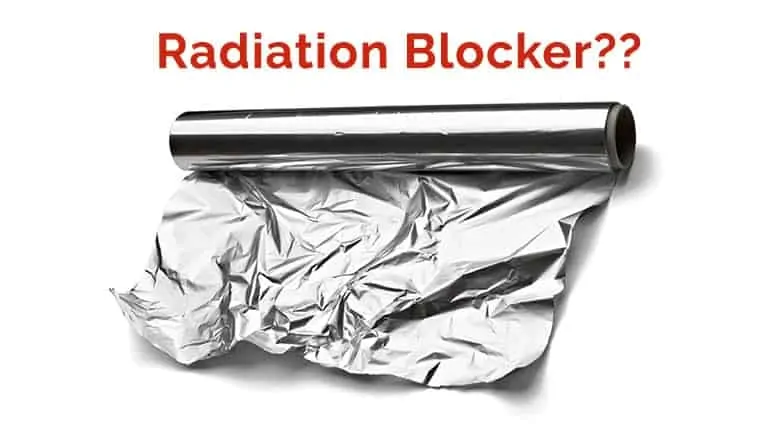
One option is MU-metal, a man-made material, which has effects on magnetic fields.
MU-metal doesn’t destroy EMFs but alters the way they travel. To be of some effect against radiation, you would have to build yourself a house coated with this material, which would be very expensive.
If you only put it against the wall where your meter box is, it may reduce the levels of radiation directly behind it, but it may cause higher levels in other areas. This makes it quite random to use.
Shielding mesh GPA, another option, is an effective weapon against EMF radiation, if it is outside the near field. The mesh is made up of fiberglass with metal [g] woven throughout it and coated in electrically conductive T98 paint.
[g] https://emfadvice.com/metal-attract-emf/According to the University of German Armed Forces, GPA mesh is able to reduce over 99% of high frequency radiation and dramatically reduces low frequency radiation (download the test report – https://en.geovital.com/wp-content/uploads/sites/3/2014/02/Geovital-GPA-shielding-mesh-test-report.pdf).
The mesh can be applied all over the house on ceilings, walls and sometimes flooring. One can even build with it!
What You Can Do To Limit Your Exposure To EMF Radiation?

Exercising regularly and eating a nutritious diet will help you stay healthy, which is key for being able to fight viruses and other disease you may come across if you get EMF radiation.
By using an EMF meter [g] to locate where high levels of radiation are coming from, and by switching the device off, you can reduce the amount of EMF radiation you expose yourself to.
[g] https://emfadvice.com/best-emf-protection-cell-phones//Here is a list of steps you can further take to reduce your exposure:
- Don’t use Bluetooth [h], rather use a headset or put the phone on speaker.
- Use Ethernet cables to get the Internet to your computers and laptops, and limit your use of WiFi.
- Limit time spent on phones and tablets.
- If you use your phone for an alarm when you are asleep, set it on airplane mode.
- Use an EMF meter to read the radiation levels, electricity levels and magnetic levels around you. Helping you to be aware of the amount of EMF radiation around you and enabling you to make changes in your lifestyle.
- Using extension cables reduces your exposure.
Limiting your exposure to EMF radiation is very hard to achieve, especially considering the world we live in. But if you really are committed you can do it.
It will have to become a lifestyle that you get into – but it’s completely doable.
10 Plants That Absorb Radiation and EMF
1. Succulents/Cacti

Have you ever seen those plants with fleshy leaves and stems and often very spiky? They’re probably a member of the cacti species.
Have you ever seen those plants with fleshy leaves and stems and often very spiky? They’re probably a member of the cacti species.
Its name, cactus, is actually derived from a Greek word meaning spiny or spiky. As scary as the spikes may be to someone who only has a mental image of this plant, cacti are one of the best plants that can protect against EMF radiation.
In 2005, NASA conducted a home-based study and found that at least five plants commonly planted in-house at home or in offices can significantly absorb EMF radiation from electronic devices such as computers and phones – and cactus was one of them.
Cactus can protect you from a variety of radioactive activity. And bonus points for those of us who DON’T have a green thumb:
They are easy to grow and maintain.
It is a plant that naturally thrives in arid areas, so you don’t have to water and monitor it constantly.
Tips for Growing Cactus
You can either grow cactus from seed or from a cutting off of the mother plant. Here is how to do it:
- Take a significant cutting from a healthy mother plant.
- Select a pot where you will plant your cactus.
- Fill the pot with cactus-friendly soil – such as the soil found in arid areas.
- Plant the piece of cactus you cut in the middle of the pot about 2 inches deep.
- Only mist the soil slightly. Don’t over flood it with water.
- Put your planted cutting in a bright location.
- For maintenance: Water your cactus at most twice a month. Don’t over water.
2. Sansevieria (Snake Plant)
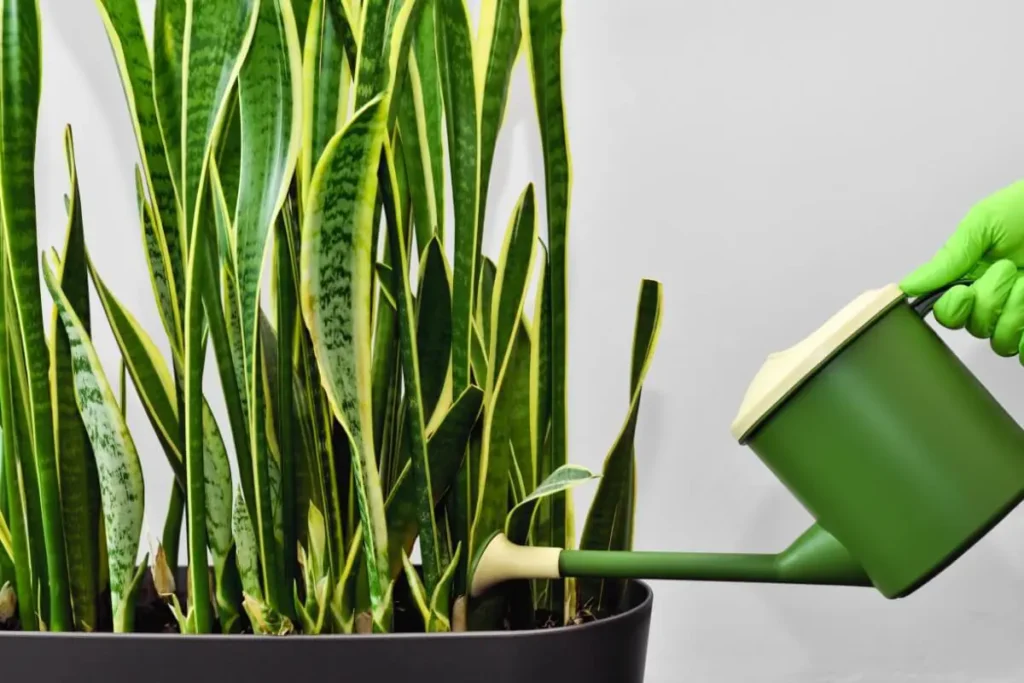
Studies on sansevieria have shown that this plant can actively absorb over a hundred different types of poisons.
Being a potent anti-pollutant, studies have also shown this plant to be helpful as an antidote for exposure to certain forms of radiation, including EMF.
Sansevieria is a plant native to West Africa that goes by several other names such as “snake plant” or “mother-in-law’s tongue.” As far as care goes, it’s a hardy plant that’s easy to grow indoors.
Tips for Growing a Snake Plant
There are a few factors you need to consider before you decide to grow a snake plant. For instance:
- Lighting: Indoor plants are best grown under bright light despite the fact that they are tolerant to light and can thrive in dark areas.
- Water: Indoor plants such as sansevieria have acclimatized to growing in somewhat dry conditions – aka they don’t require much watering.
- Temperature: Snake plants thrive well in the temperature range favorable for humans – somewhere between 50 and 80 degrees Fahrenheit.
- Soil type: Fast draining soil is best.
Sansevieria is grown from rhizomes. Here’s how to do it:
- Cut the rhizomes that are close to the leaves of the plant.
- Leave the cut part for a few days so that the cut surface can heal.
- Bury the rhizome that has healed in potting soil inside a pot of your choice.
- Cover with soil around the base – just the crown of the plant, not the leaves.
3. Spider Plant
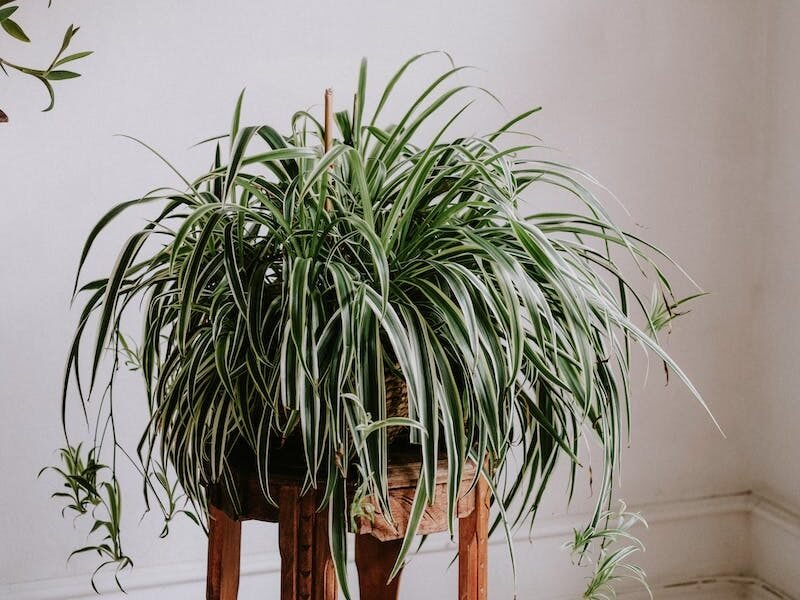
The spider plant is a common type of succulent. Studies have shown that spider plants are capable of absorbing a variety of pollutants, including harmful gases such as aldehyde and formic acid.
Its impressive abilities in absorbing pollutants qualify it as an effective absorber of EMF radiation as well.
Tips for Growing Spider Plant
Spider plants are hardy plant and will grow even in the harshest of conditions. In perfect conditions, they blossom with stunning leaves that make them the perfect choice for an indoor plant that doubles as decor.
Here is how to grow them:
- These are by far one of the easiest houseplants to plant and propagate. You only need to get a plantlet which has formed roots already.
- Plant the plantlets in a different pot and you are set.
- You can also divide the main plant and re-pot the divided portion.
4. Betel Leaf Plant

Betel leaf plant is among the most trusted absorbers of EMF because there are studies that actually support this claim. It works by preventing radiation-induced damage to DNA – a study that was conducted by researchers in India.
Tips for Growing Betel Leaf Plant
The best way to get started is to simply buy a betel leaf plant from a nursery and continue growing it in your home or office.
However, you can also propagate the plant from the main plant:
- Make about an 18 cm long cutting from the main plant.
- Using a knife, make cuttings just below the leaf node.
- Remove any leaves present (except for the two uppermost leaves, which you can leave as is) as they will hamper the growth process.
- Put the cuttings in a glass and fill with water.
- Allow the cuttings to stand for about a week as you change the water in the glass every two days.
- Place the glass in direct sunlight.
- Once several roots appear, transfer the cuttings to a pot and plant them.
5. Stone Lotus Flower

Most people prefer the stone lotus flower indoors because it is the perfect shape and size for your desk, which is usually an EMF hot spot thanks to computers, wireless printers, and other devices.
Besides being a beautiful plant, the stone lotus flower has potent air purification abilities. It is also believed to be effective in absorbing toxins such as EMF radiation.
It’s even popular as an essential oil thanks to its many health benefits.
Tips for Growing Stone Lotus Flower
Stone lotus can be grown either from the seed or from a tuber. To grow from seed:
- Scrape the seed to remove the husks.
- Put the seeds in warm water and change the water daily. Seeds that float should be removed.
- The seedlings will start growing inside the water.
- Once they are about 6 inches tall, remove them from the water and plant them in a pot.
To grow from tubers:
- Purchase lotus tubers.
- Put them in a bowl of water.
- Change the water constantly every other day until roots start developing.
- Take a container and fill it with soil.
- Transfer the tubers to the pot and water 2-3 times a week.
6. Asparagus Fern
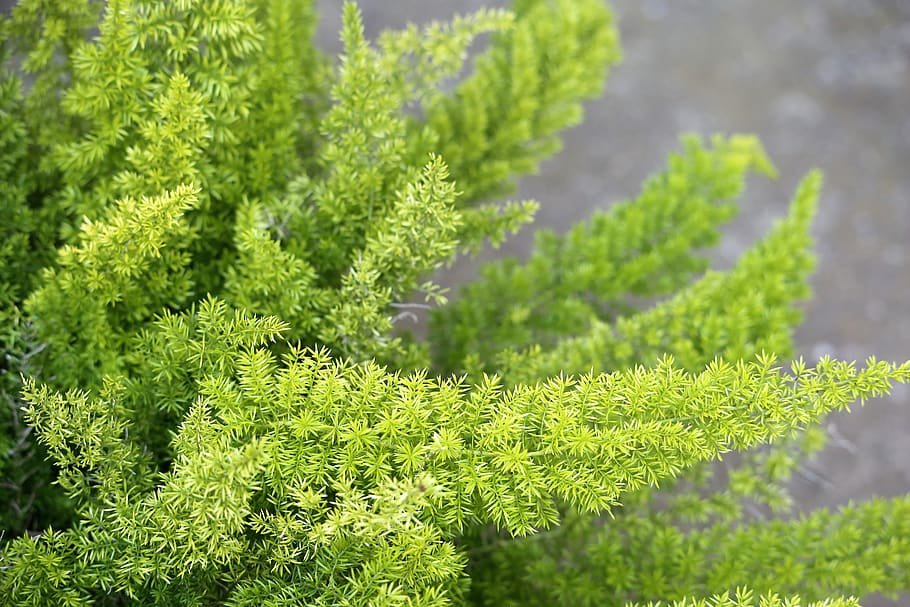
Besides the lovely fragrance this plant can add to your house, it also has potent radiation-absorbing qualities, which makes it a useful plant for EMF heavy areas.
Its antioxidant properties have also proven helpful in the management of people exposed to gamma radiation.
Tips for Growing Asparagus Fern
Asparagus fern has spurs that are somewhat thorny. You might want to wear gloves while working with this plant.
- You can grow asparagus from cuttings or from seed.
- The plant usually thrives well in shade though it will adapt to light.
- Use a well draining potting soil to plant your asparagus fern.
- Asparagus fern requires a significant amount of water. Ensure that you water it adequately – at least once a day.
7. Areca Palm

Areca palm is a popular houseplant for both its aesthetics and well known ability to purify the air of toxins.
It’s especially common (and useful) in homes located in dry areas because it gives off large amounts of water vapor – important for cooling the environment.
It is also a potent absorber of EMF radiation, especially when placed in direct line – without obstruction – with the EMF-emitting device.
For this reason, the areca palm is most useful in home offices or for sprinkling throughout the house, placing in front of outlets.
Tips for Growing Areca Palm
It is easy to grow areca palm indoors, though it is not as hardy as some other radiation reducing plants we’ve mentioned.
- Purchase a small tabletop areca palm plant (bigger is fine – they just get expensive).
- Water it well and routinely, and apply fertilizer to keep it healthy.
- Areca palm thrives with regular pruning, so keep that in mind.
- Ensure that you change the potting at least once a year.
8. Rubber Plant

The rubber plant is an easier plant to keep and maintain. It is relatively small in size and with a faster growth rate – appropriate for indoor planting, though others may prefer planting it outdoors.
Tips for Growing Rubber Plant
You can start growing a rubber plant from stem cuts or from seeds:
- Obtain a stem cut from a mature plant
- Plant the stem in a rooting medium, preferably, a pot.
Alternatively:
- You can start the plant from a seed by planting the seed in a small tray.
- Once the seedling achieves a significant height and with enough roots, transfer it to a larger growing pot
9. Aloe Vera
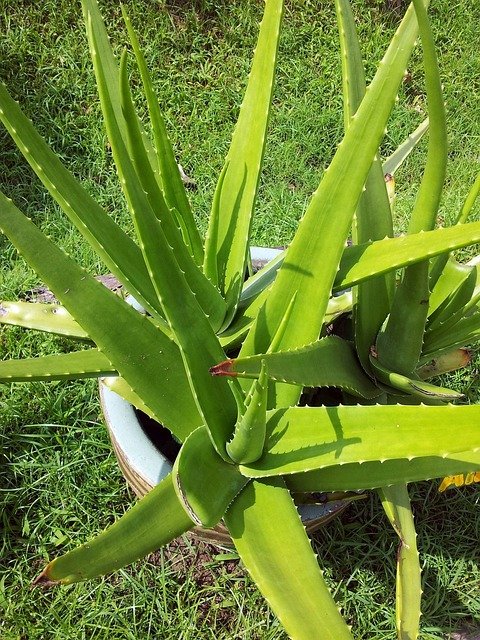
Besides its highly effective medicinal value, Aloe Vera is one of the best plants that absorb radiation and EMF emissions.
Just like other plants, it can also help clean and purify the air in your room by actively absorbing carbon dioxide while giving out oxygen simultaneously.
It is easy to grow and pleasant to look at – a charming combination that makes it a clear houseplant winner.
Tips for Growing Aloe Vera
New Aloe Vera plants will bud continuously from the main plant.
As a result, you can just pick the new plants and plant them in a pot or a container of your choice.
- Be careful about the amount of water you add to the plant. Excess water causes root rot and withering leaves.
- The ideal soil type is reminiscent to the fast draining soil for planting other succulents such as cactus.
- To make your plant do best, keep it under light but away from direct sunlight.
- For it to work effectively in absorbing radiation, place the plant directly in line with any devices that emit EMF.
10. Sunflower

Tens of thousands to millions of sunflowers have been planted in radioactive areas to help absorb radioactive emissions. As such, sunflowers have proven to be one of the most effective, natural absorbers of radiation.
In fact, sunflowers plants were planted around the Chernobyl site to help clear the radioactive cesium from the environment.
Tips for Growing Sunflower
Sunflower is mostly an outdoor plant, though some people may occasionally plant it indoors. It is usually grown from seeds.
- Space the seeds in shallow trenches with sandy soils. The spacing should be about 6 inches apart in depths of up to 2 inches.
- Cover the seeds and water them. They will sprout in 7 to 10 days.
- Thin the plants to about 2 feet apart once they have grown their second set of leaves.
- The plants usually yield seeds within 80 to 120 days after planting.
Frequently Asked Questions
Do cacti absorb radiation?
Cacti is best known for absorbing radiation around computers. Most theories attribute its anti radiation plant abilities to the cacti’s high water content. Though helpful, a single cactus alone is not enough to mitigate computer radiation. Distance is the best, most effective solution.
Do sunflowers absorb radiation?
Yes! In fact, sunflowers were the chosen vessel by researchers to plant around the Chernobyl site. They were effective in extracting cesium from surrounding ponds.
How do plants remove toxins?
Plants act as filters. We already know they take surrounding carbon dioxide and convert it into clean, breathable oxygen. There are some theories that plants also work to retain or filter radiation, leaving cleaner air around it. Live plants have been shown to effectively filter carbon monoxide, formaldehyde, and other toxins from the air.
How many plants does it take to purify the air in a room?
The 1989 NASA study suggests a range of 15 to 18 plants is enough to purify the air in an 1,800 square foot building. They also suggest each plant be planted in a container roughly 6 to 8 inches in diameter.
EMR Shielding Solutions:
Discover comprehensive EMF and RF shielding solutions, effectively shield against electromagnetic and radio frequency interference.

Ref: https://www.emrss.com/?ref=jordan_beatemf
Source: Petal Republic, EMF Advice, Wikipedia
Also Read:
